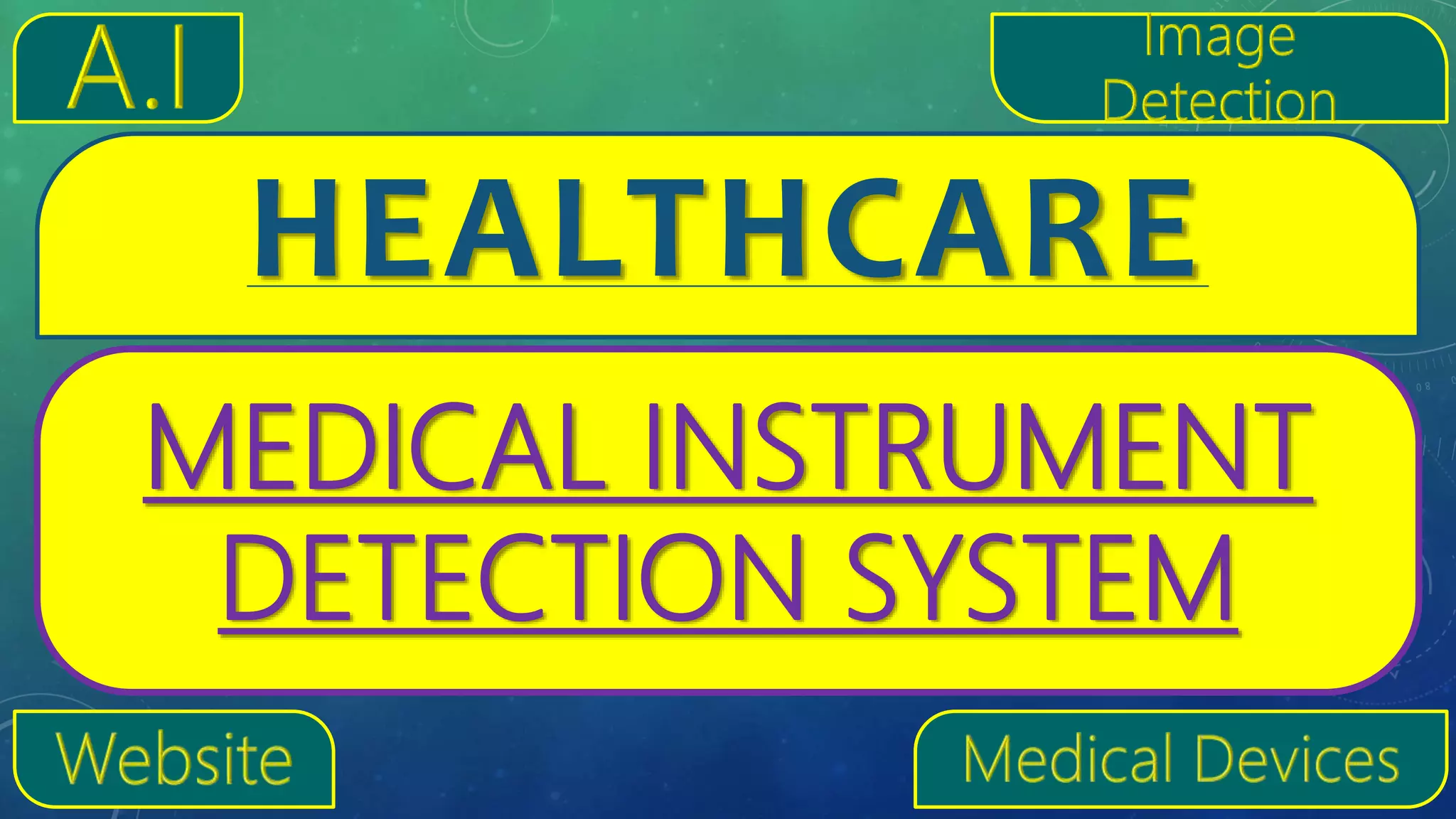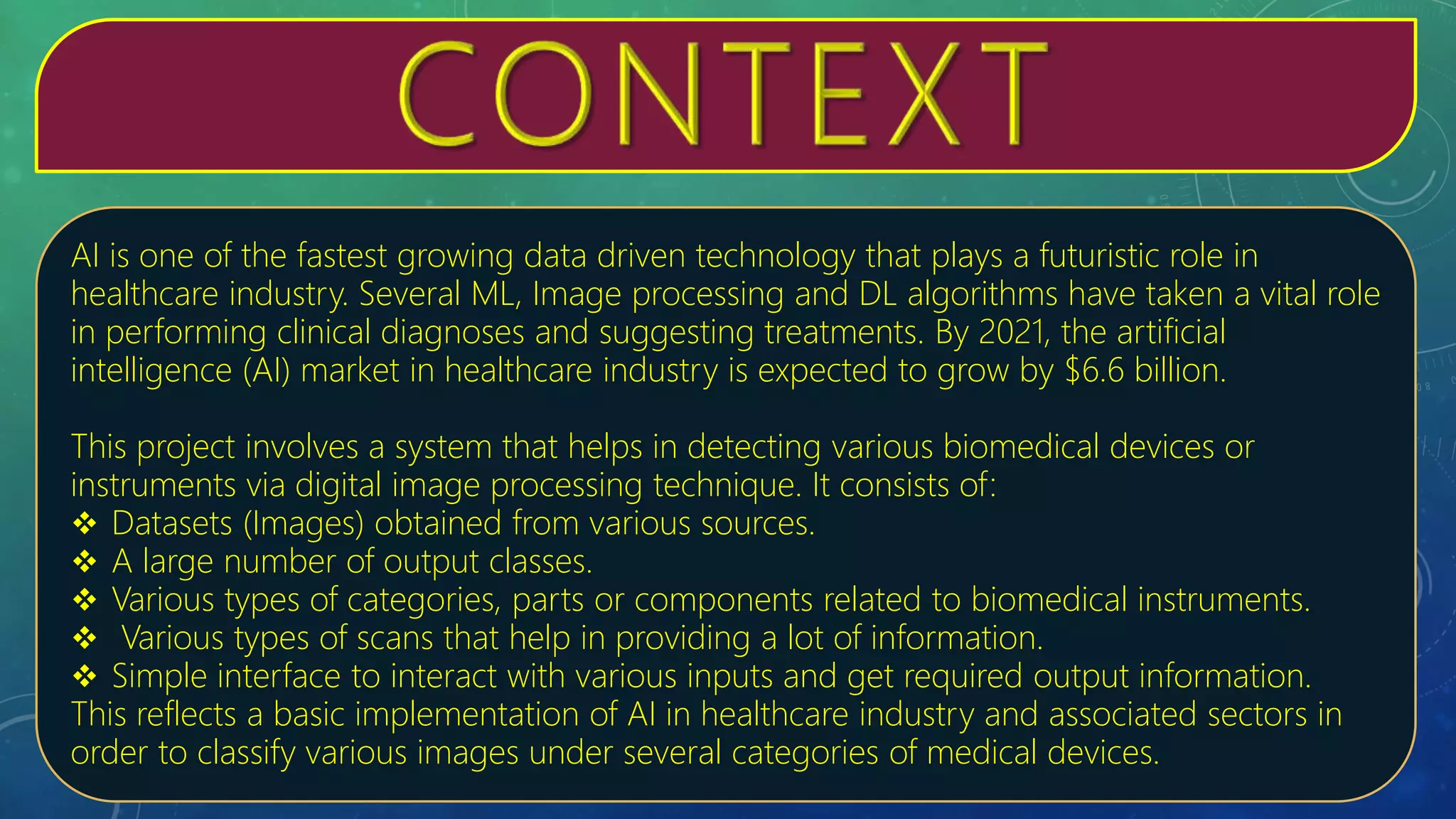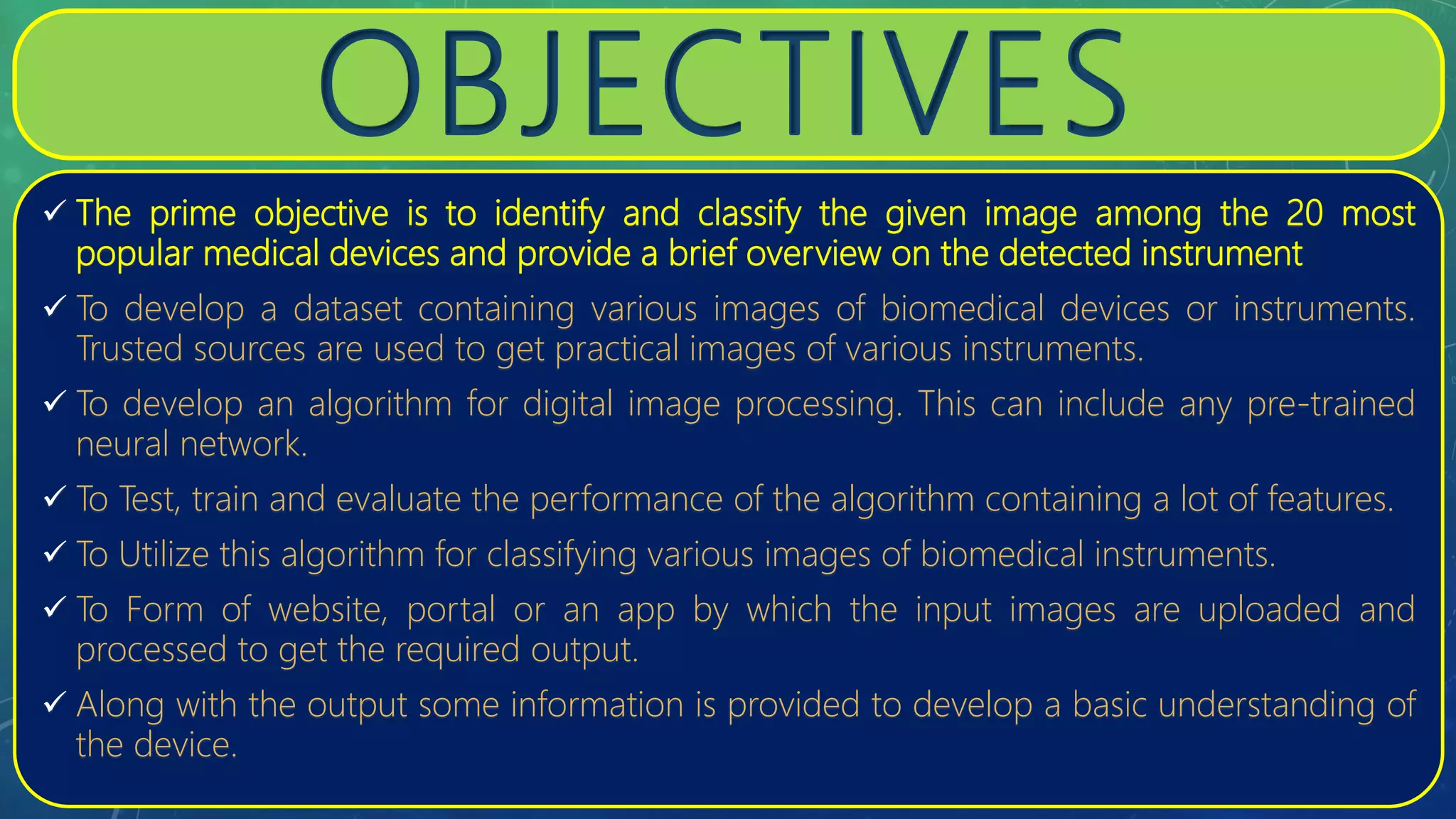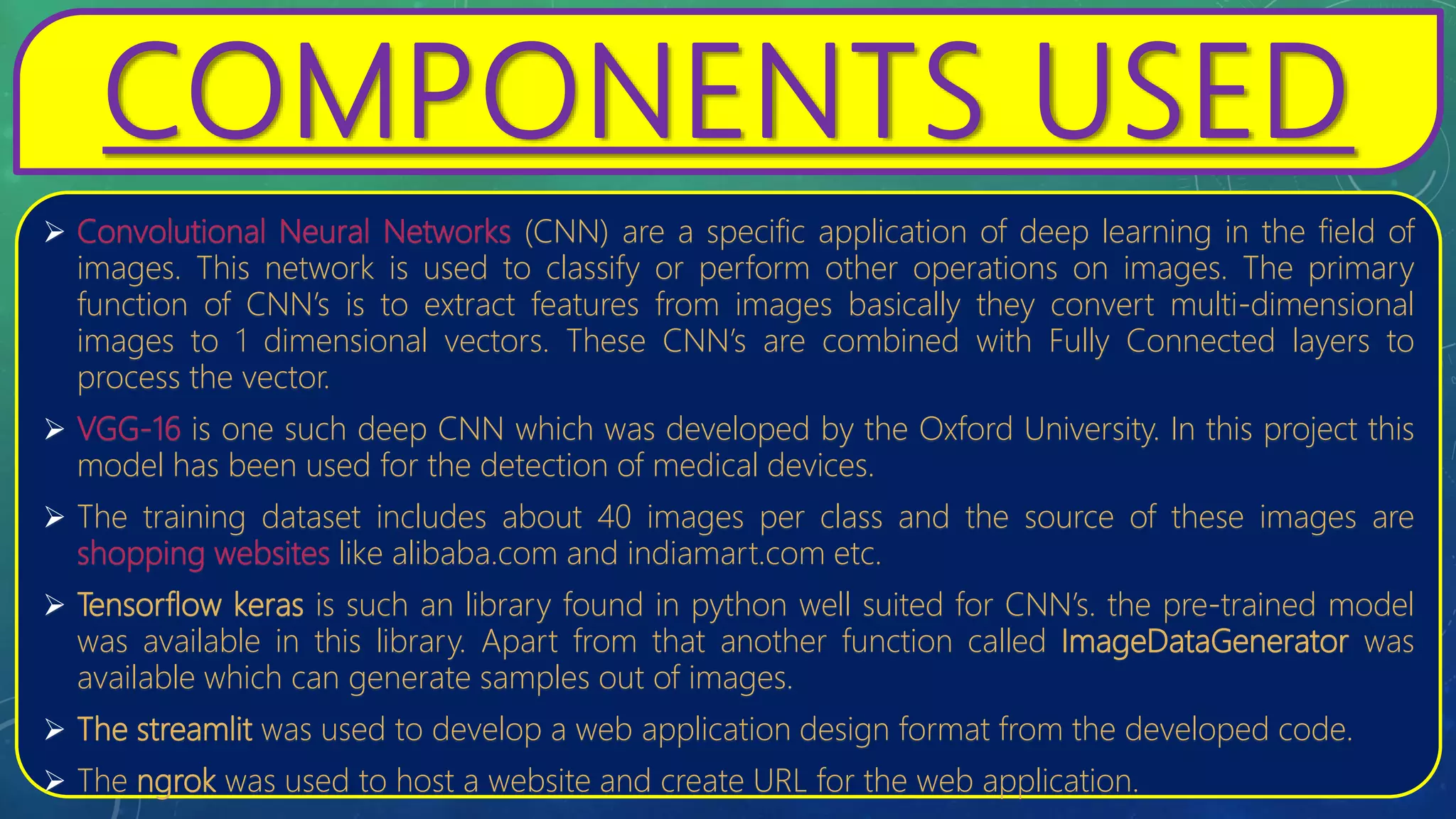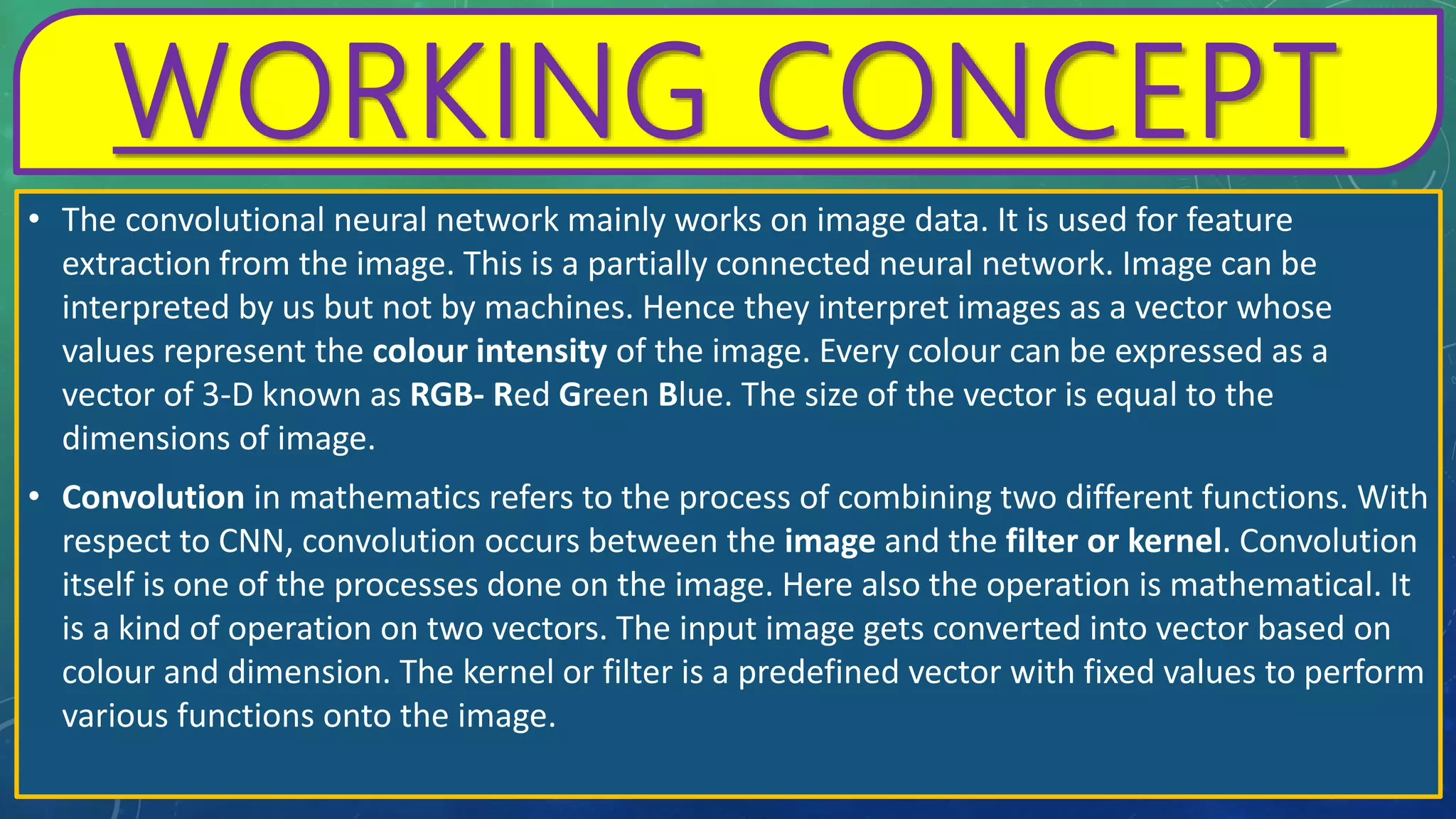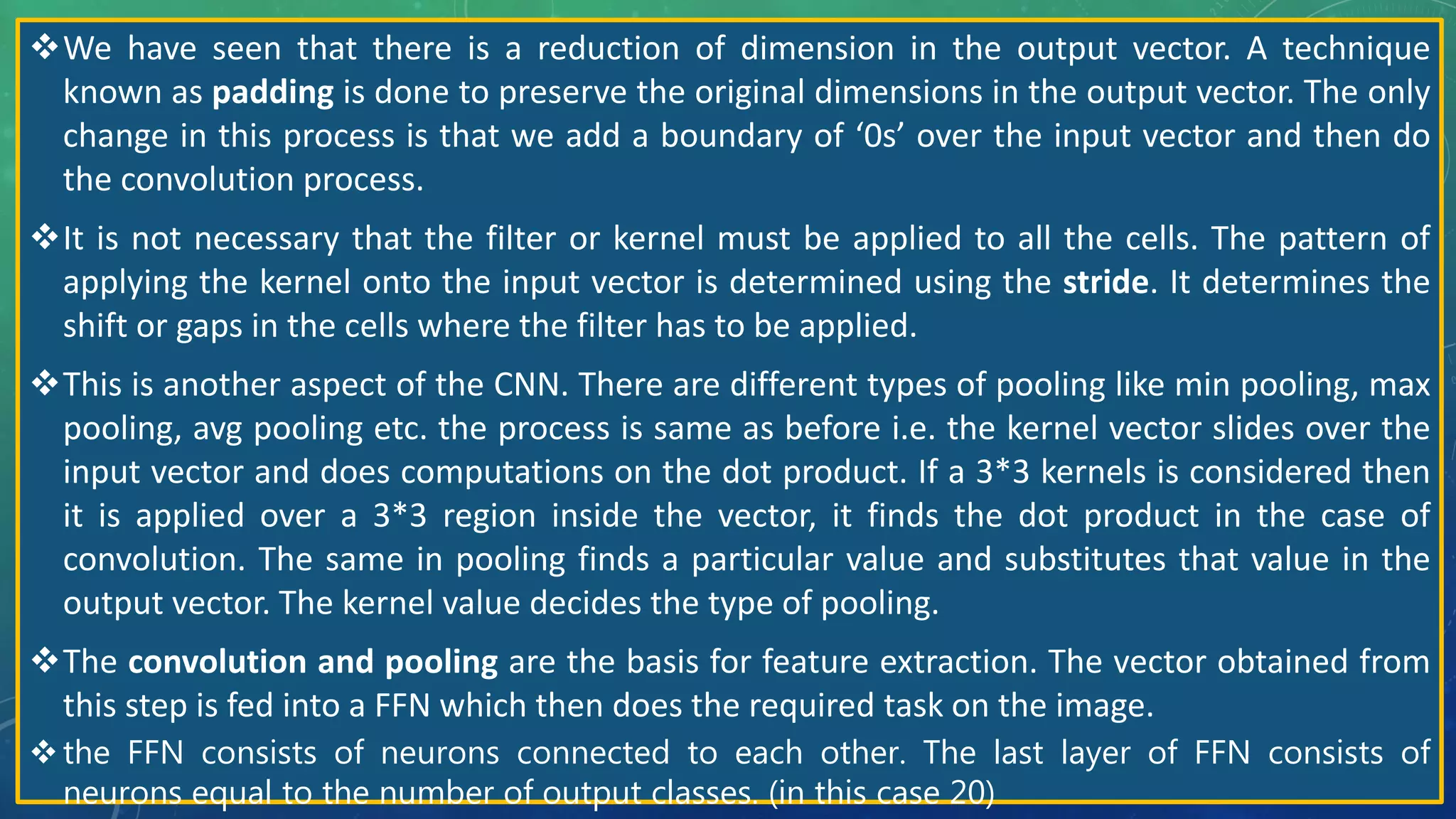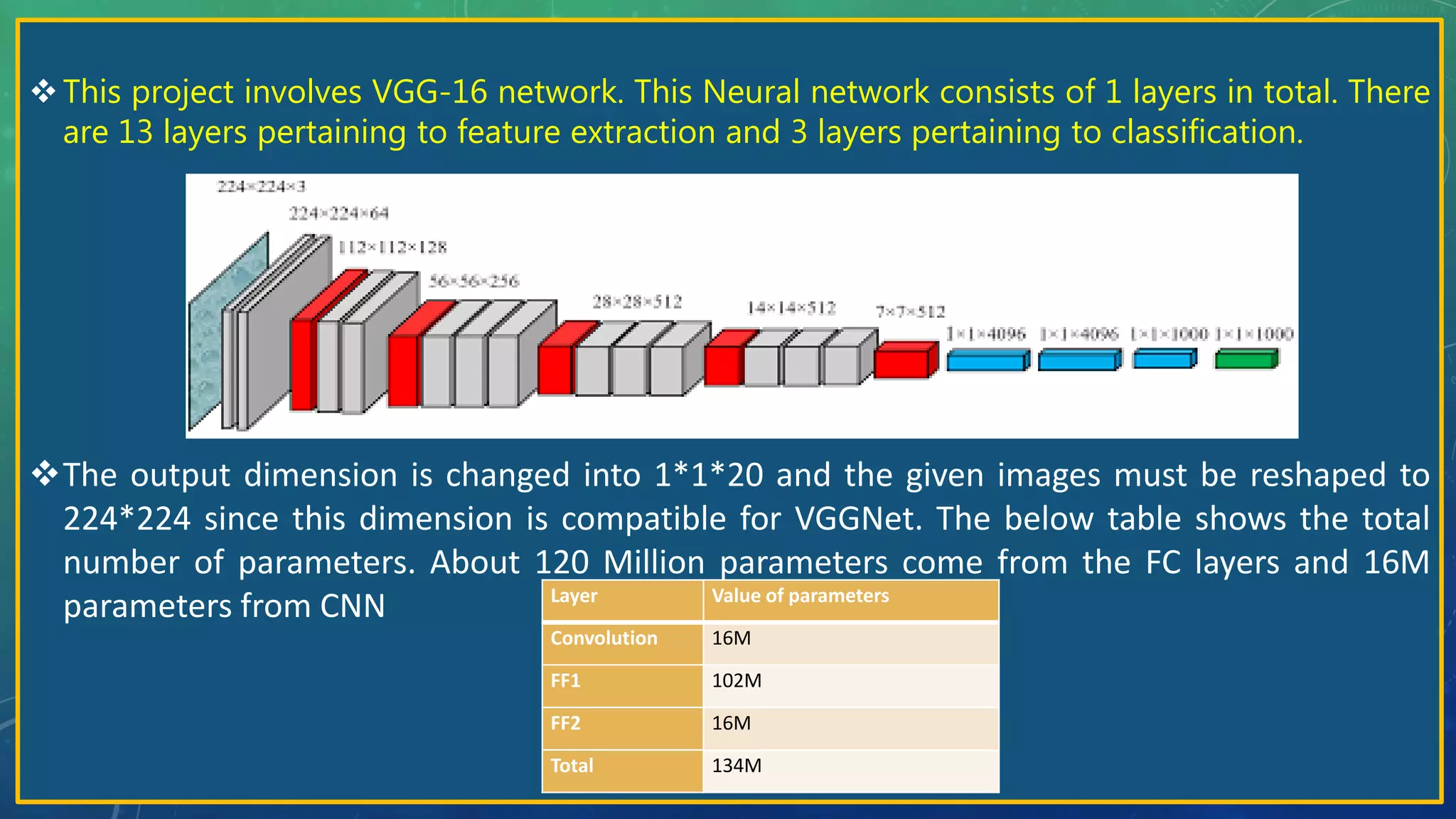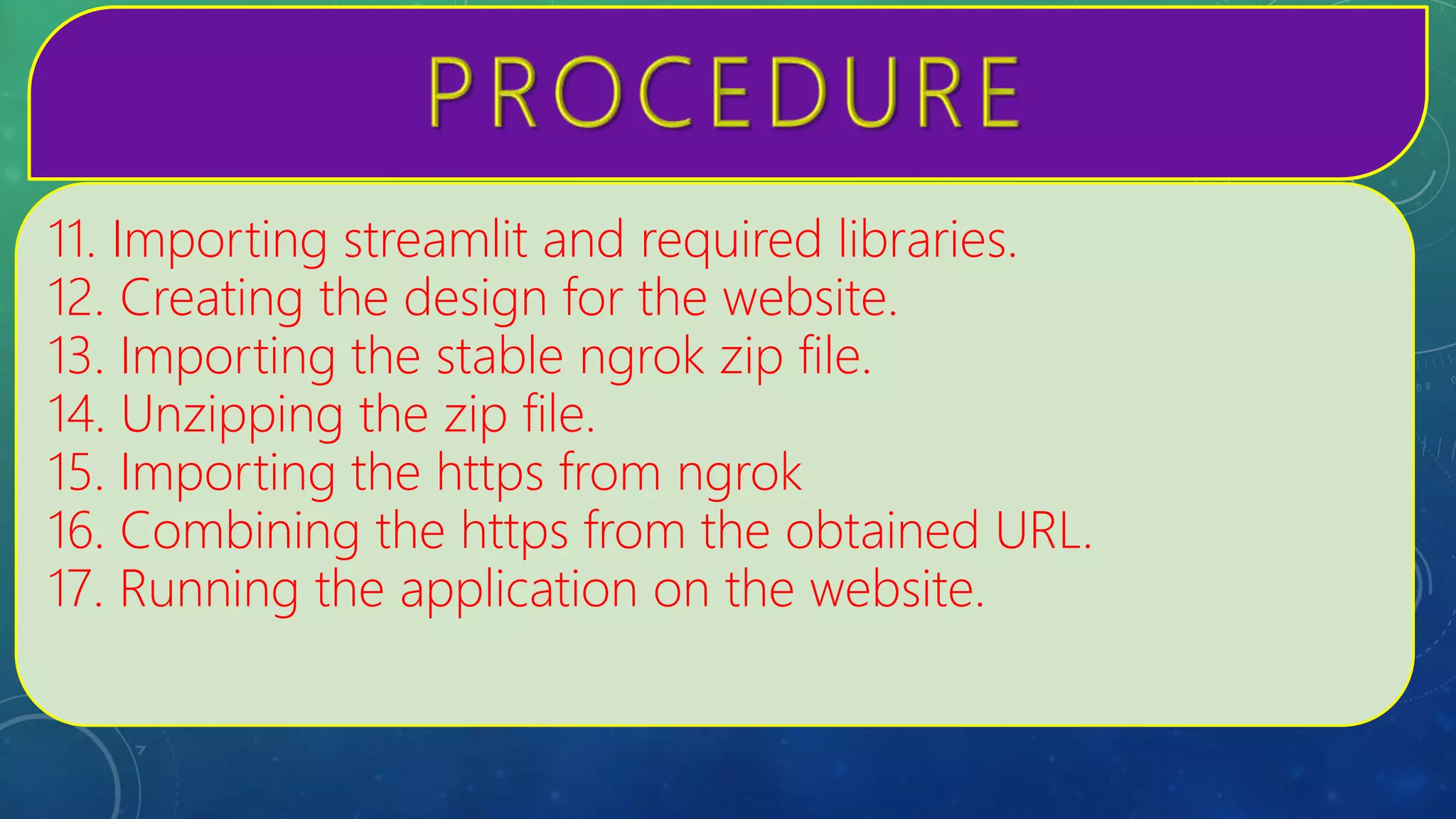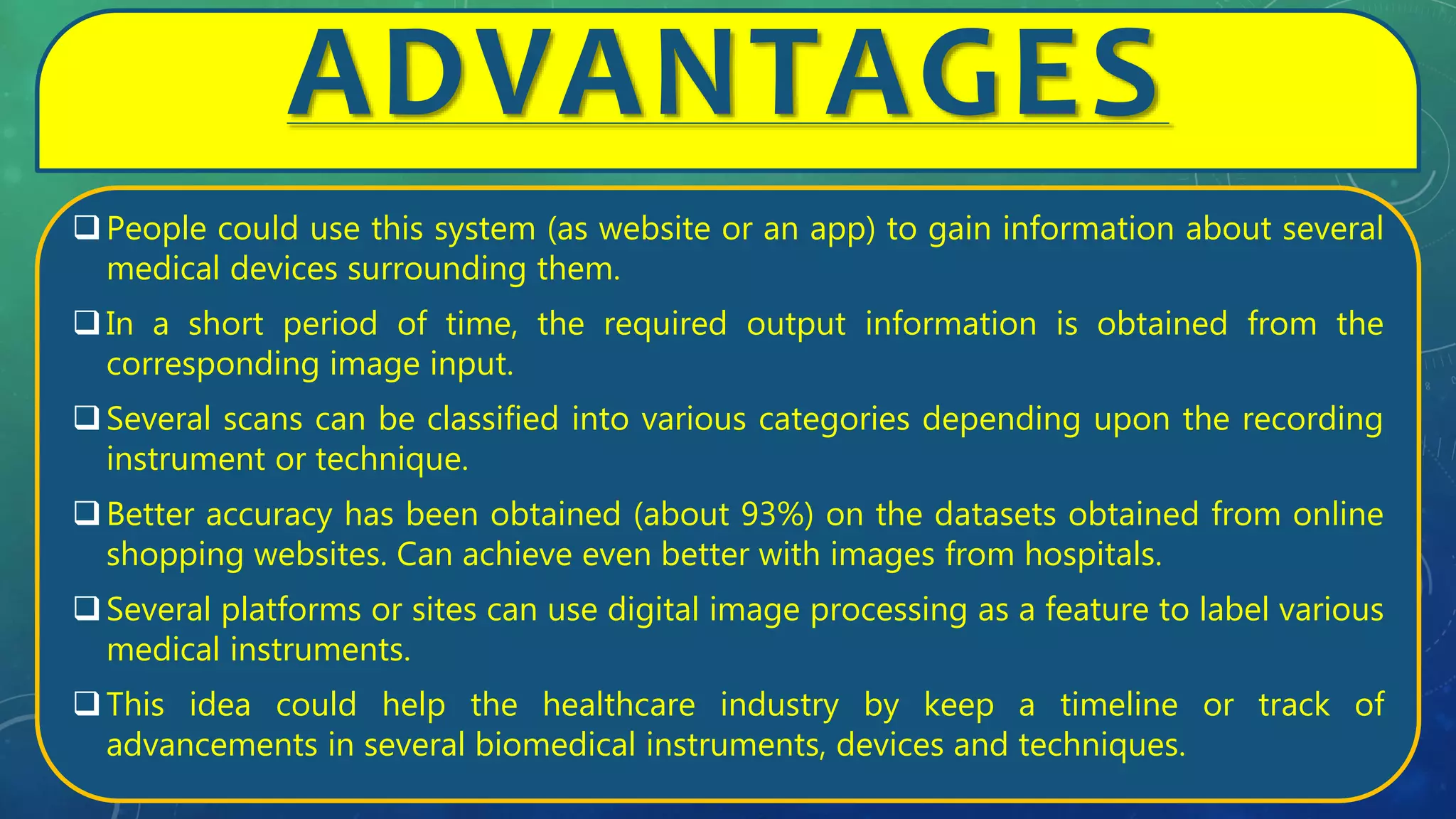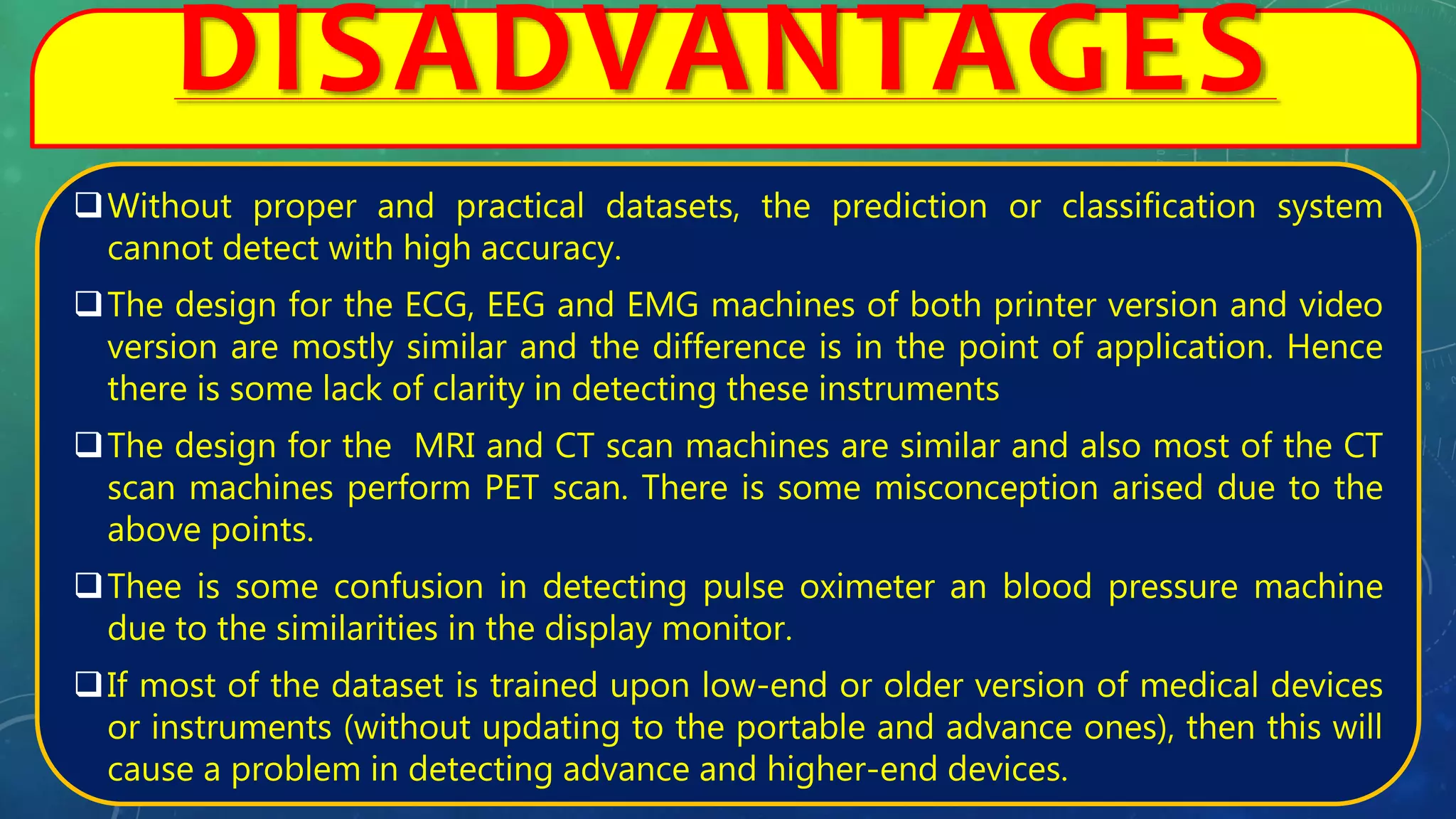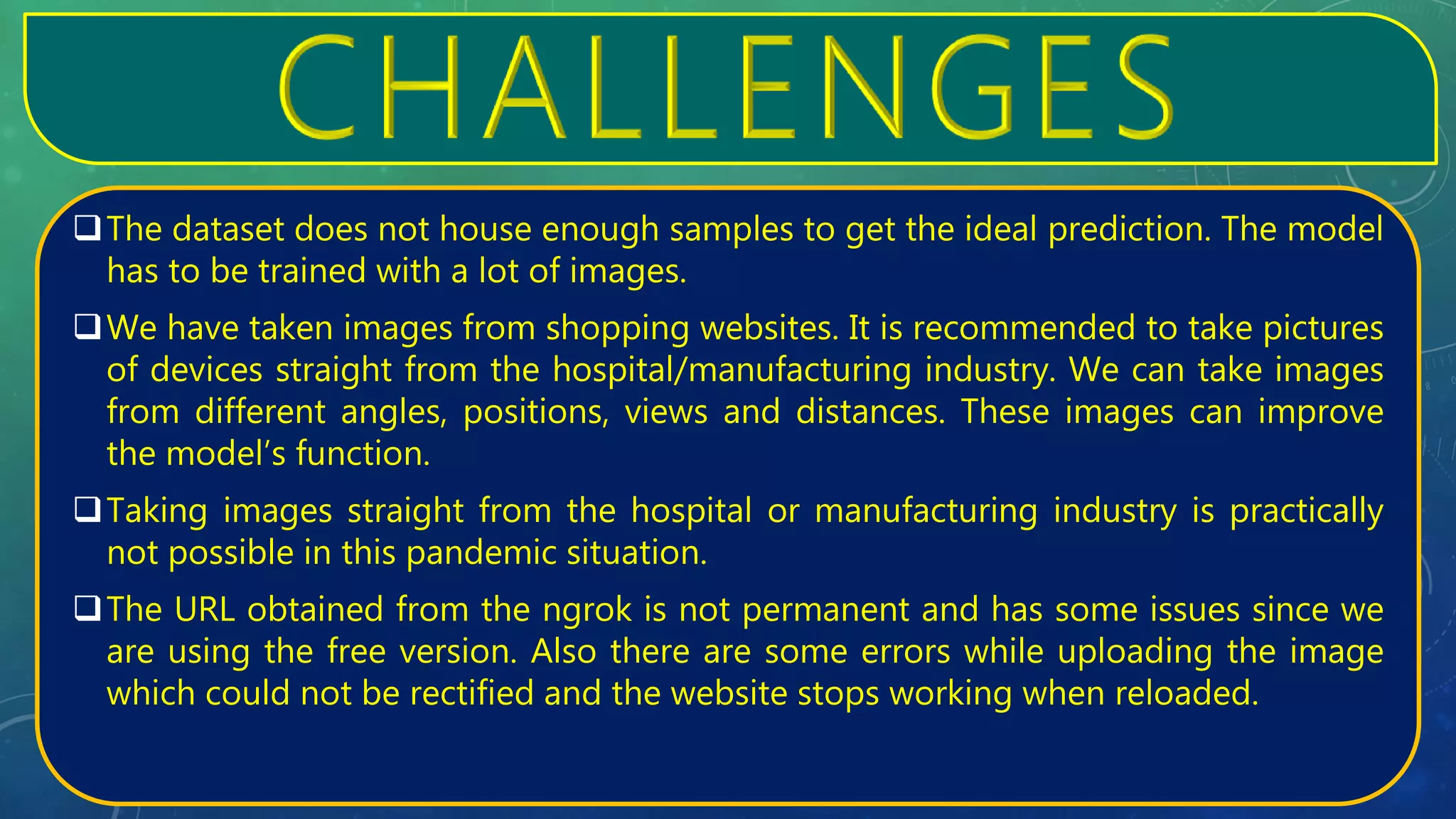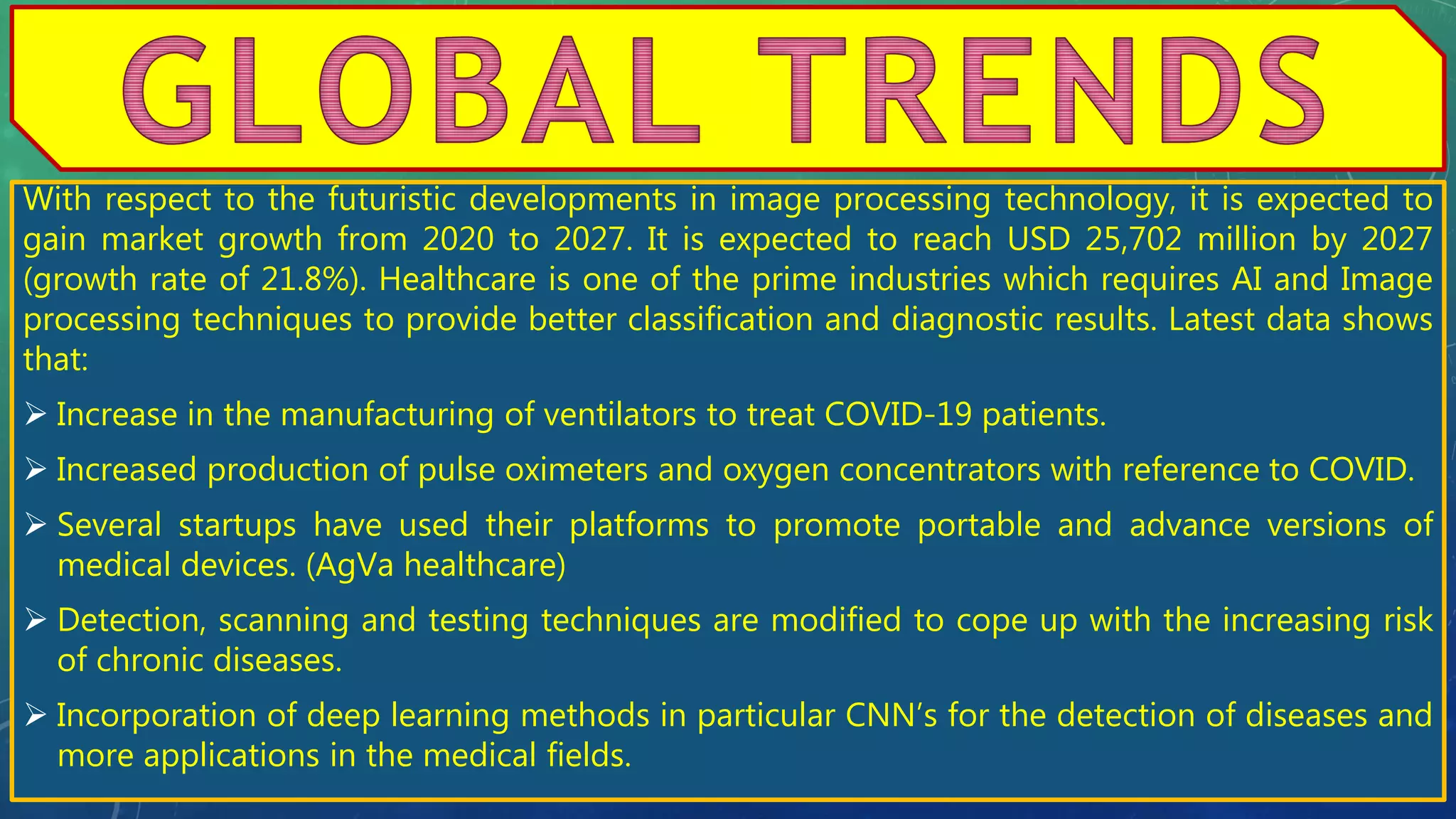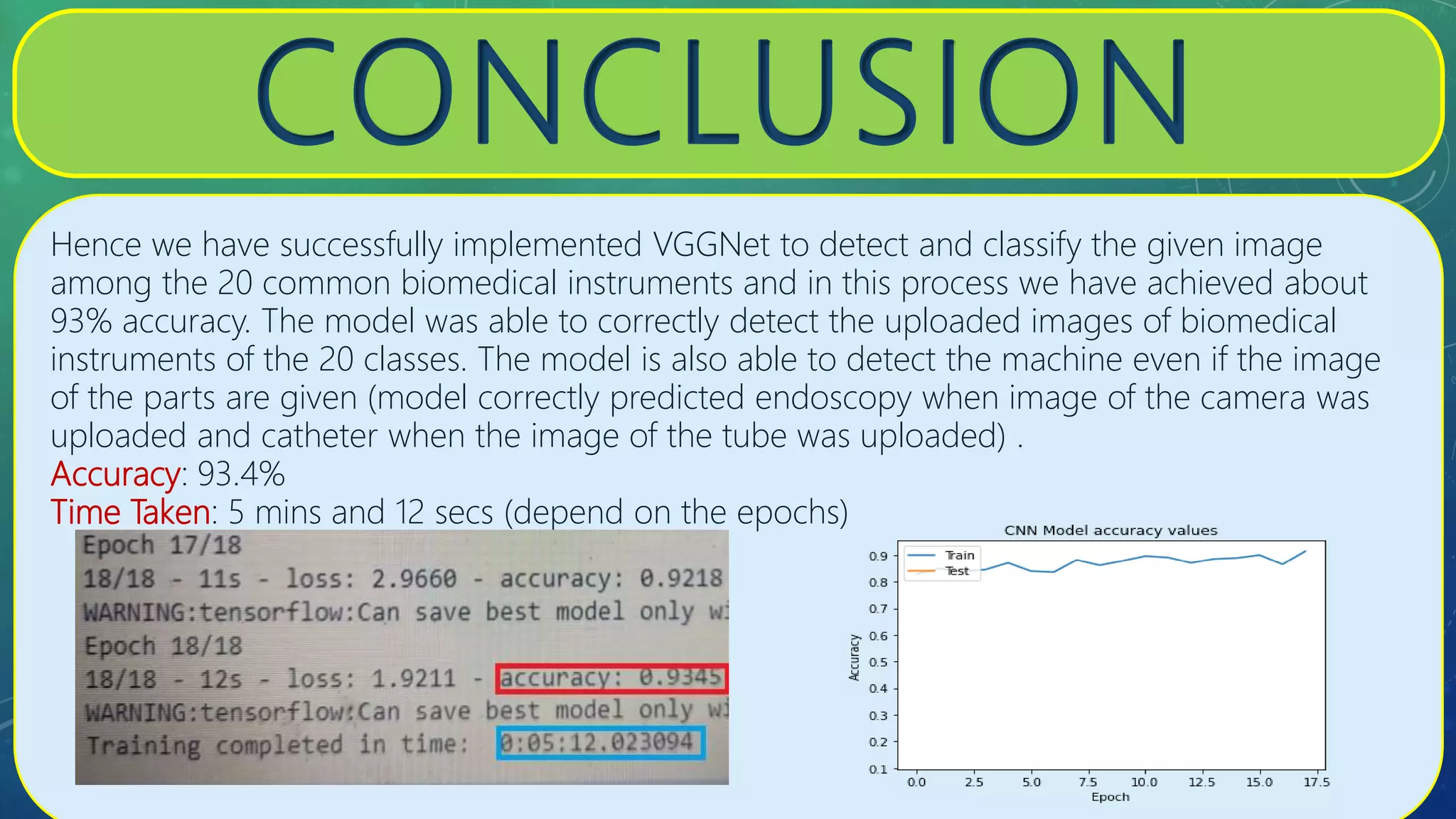The document presents a project focused on developing an AI-based medical instrument detection system using machine learning, image processing, and deep learning algorithms, aimed at classifying biomedical devices with a projected market growth of $6.6 billion by 2021. The system employs convolutional neural networks (CNN), specifically the VGG-16 model, to achieve approximately 93% accuracy in recognizing images of 20 common medical instruments, and includes a user-friendly web application for interaction. Despite its advantages, the project faces challenges such as reliance on practical datasets and limitations of free hosting services for the web application.
